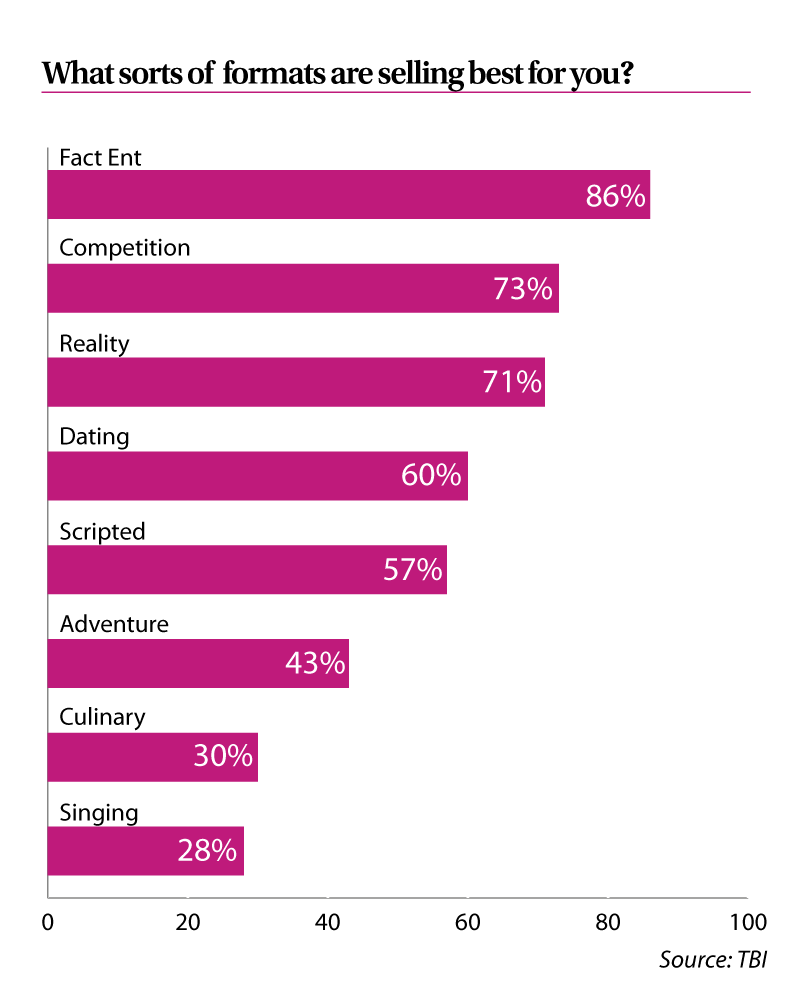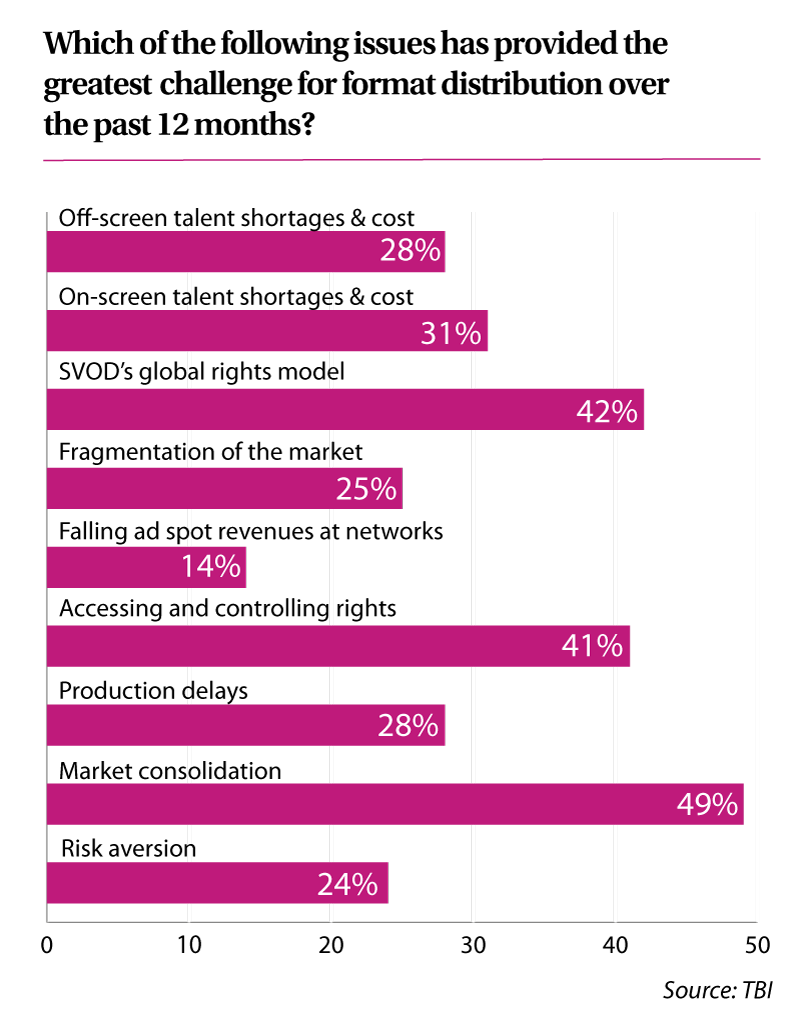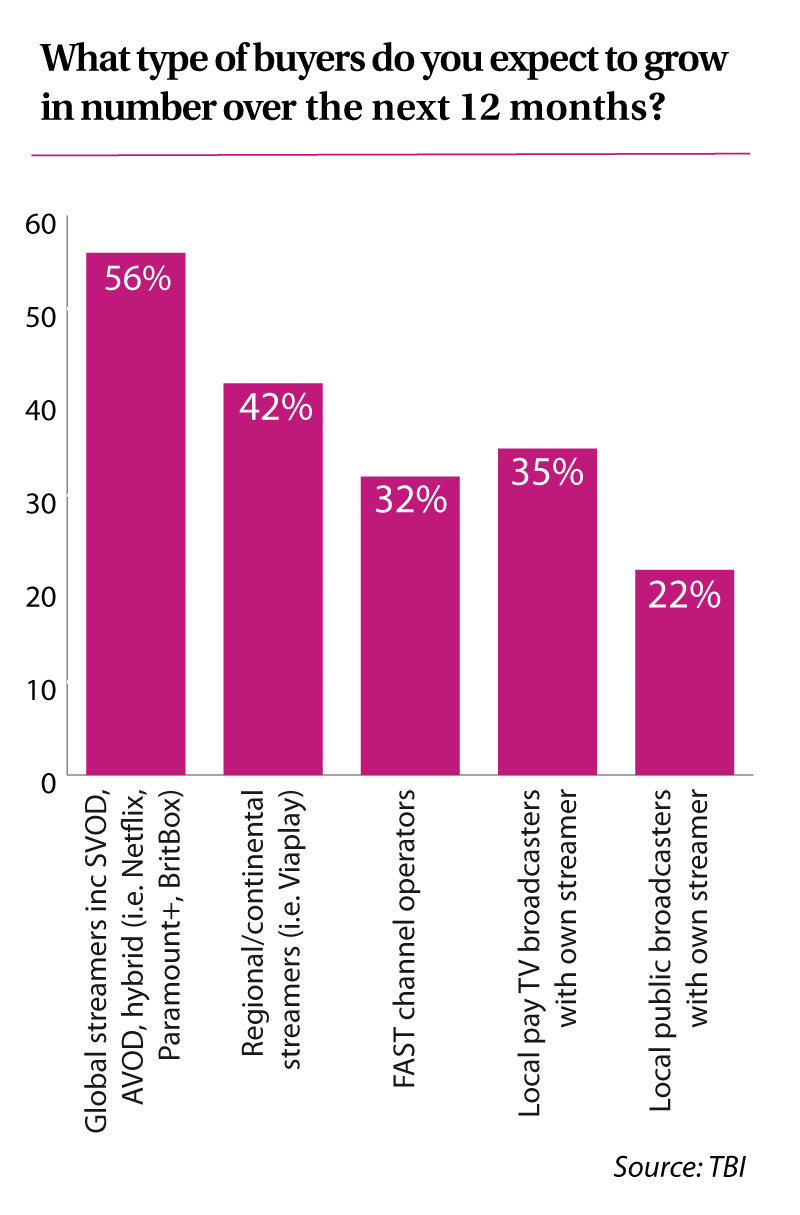
After more than 35 years of operation, TBI is closing its doors and our website will no longer be updated daily. Thank you for all of your support.
TBI Distributor’s Survey 2022 – Part 3: Formats
From the US, India and Germany, to Brazil, the UK, Spain, Canada and numerous others in between, the TBI Distributor’s Survey 2022 is the industry’s most extensive exploration of the global sales business. Join us as we explore what’s changed over the past 12 months and find out where we’re headed next. Here we examine results from the unscripted sector
Formats: Tried and tested
Pandemic-related problems made life easier for many format outfits but despite an uptick in demand for adventure shows, buyers are becoming more risk-averse, with familiar titles dominating the past 12 months
Cost-effective and, at times, a less risky proposition than a truly original commission, the format business continues to adapt to the rapidly evolving ecosystem and the myriad demands put on it by both traditional linear networks and younger streamers.
There is little doubt that the strength of tried and tested formats remains strong, with the big groups continuing to enjoy stellar results with ideas that are decades old.
Indeed this has caused consternation among many creatives in the business, with several events of late dominated by issues around the reliance on old IP being reworked for the next generation or, in many cases, possibly the same folk who have just got a decade or two older.
 This sector, unlike scripted and unscripted, has not secured the same levels of growth over the past 12 months, but most distributors reported that their revenues had risen. A notable 16% said revenues had dropped by up to 19%, potentially down to the cyclical nature of the format business, but 67% said they had seen increases of between 0-9%. Profits followed a similar pattern, with 79% reporting either no increase or an increase of 0-9%.
This sector, unlike scripted and unscripted, has not secured the same levels of growth over the past 12 months, but most distributors reported that their revenues had risen. A notable 16% said revenues had dropped by up to 19%, potentially down to the cyclical nature of the format business, but 67% said they had seen increases of between 0-9%. Profits followed a similar pattern, with 79% reporting either no increase or an increase of 0-9%.
Patterns & trends
Trends in formats tend to move in cycles until something revolutionises the market, but with no such show doing that over the past 12 months – or for several years before that – it has been the stalwarts of dating, adventure and competition that have been fuelling format distributors’ sales books.
With the pandemic largely halting international travel over recent years, there has been a noticeable uptick in demand for adventure formats as the world has again opened up. Although some of the bigger groups managed to produce through the various travel restrictions, a return to normalcy saw adventure formats voted as best sellers by 43% of respondents (who were able to pick multiple genres).
However, it was factual entertainment and competition that have proven to be the biggest sellers for format companies this year, with 86% and 73% of respondents respectively putting shows from the genres among their key performers.
Culinary hits fared less well, perhaps surprising given the success that market leaders such as MasterChef have found in returning to screens around the world. Spin-offs of these cookery delights have also become popular.
There was a noticeable uptick in the performance of scripted formats, with 37% of respondents placing drama remakes into their best-sellers.
 Perhaps underlining the risk aversity of the market right now, this trend suggests there is also value to be had in buying into scripted without the need for costly and time consuming development processes to get scripts to a serviceable state.
Perhaps underlining the risk aversity of the market right now, this trend suggests there is also value to be had in buying into scripted without the need for costly and time consuming development processes to get scripts to a serviceable state.
Costs & opportunities
In the rather unique world of format distribution, the challenges tend to be different from those operating elsewhere. However, the inflationary costs of both off-screen and on-screen talent were highlighted by respondents, although it was market consolidation that secured the most votes from respondents. Almost half said that this issue had proven to be the biggest challenge of the past 12 months.
There was a belief, however, that the number of buyers would increase over the coming year, with the global streamers providing the biggest opportunity. Respondents, who were able to pick multiple options, also believe that regional streamers such as Viaplay will offer more potential for their format offerings over the coming months, with 42% of respondents outing their faith in this part of the market expanding.
Opportunities for growth from established local pay-TV broadcasters are predictably lower, although 22% of respondents said they had seen an increase in buying from local public broadcasters, despite this area of the market often already well established within the format community. From a geographical point of view, demand is coming from Latin America and the US, according to many respondents.
 Intriguingly, more than half of respondents said they expect to visit fewer physical markets over the course of 2023 than they did in 2019, although there remain a slew of ‘must-attend’ events. These are led by MIPCOM, but perhaps reflecting the interest from Latin American buyers over the past year, NATPE’s January event is also seen a key date in the year, along with The Asia TV Forum.
Intriguingly, more than half of respondents said they expect to visit fewer physical markets over the course of 2023 than they did in 2019, although there remain a slew of ‘must-attend’ events. These are led by MIPCOM, but perhaps reflecting the interest from Latin American buyers over the past year, NATPE’s January event is also seen a key date in the year, along with The Asia TV Forum.
Keeping one eye fixed on the future, none of the distributors that took part in the survey expect their current revenues to drop in the next 12 months. In fact, 14% are estimating growth of 10% to 19%, with a further 71% eyeing a more moderate bump of between 1% to 9%.
It is perhaps no surprise then that a unanimous 100% of Survey respondents said that they believe that their businesses will improve in the next 12 months. Similarly, almost every respondent reported that their catalogues had grown over the past year, although broadening out the demand for newer formats continues to be a considerable challenge amid global economic uncertainty.
To view other sections of the TBI Distributors Survey follow the links below
Part 1: Scripted click here
Part 2: Unscripted click here
Part 4: Kids click here
Part 5: Conclusion click here



